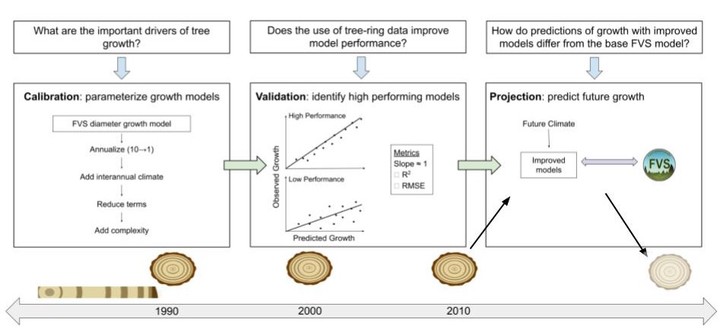Climatic sensitivities derived from tree rings improve predictions of the Forest Vegetation Simulator growth and yield model

Abstract
Forests have the potential, in particular through targeted management, to contribute to the stabilization and drawdown of greenhouse gases via carbon sequestration and storage. To identify management actions that will maximize carbon drawdown over the long term, foresters need models that accurately and precisely represent forest responses to changing climate. The most widely used growth and yield model in the US, the Forest Vegetation Simulator (FVS), does not include the direct effect of climate variation on tree growth. We incorporated the effects of climate on tree diameter growth by combining tree-ring data with forest inventory data to parameterize a suite of alternative models of the growth of three dominant tree species in the arid and generally climate-limited U.S. state of Utah. These species, Pinus ponderosa, Pseudotsuga menziesii var. glauca, and Picea engelmannii, encompass the full elevational range of montane forest types. The alternative models differ progressively from the current decadal time-step FVS large-tree diameter growth model, first through changing to an annual time step, then by adding interannual climate effects, followed by model simplification (removal of model terms), and finally, complexification, with the addition of effects of spatial variation in climate and two-way interactions between terms. We validated diameter growth predictions from these models with independent observations, evaluating model performance in terms of accuracy, precision, and bias. We then compared predictions of future growth made by the existing large-tree diameter growth model used in FVS, i.e., without climate effects, to those of our updated models, including those with climate effects. We found that less complex models of tree growth outperform the current FVS model, and that the incorporation of climate effects improves model performance for two out of three species, in which predicted growth is greater than observed growth. Tree rings can be used to identify and incorporate drivers of growth variation into a stand-level growth and yield model, giving more accurate predictions of the carbon uptake potential of forests under climate change.